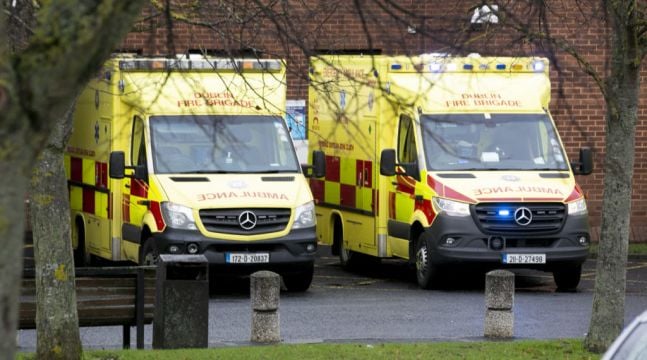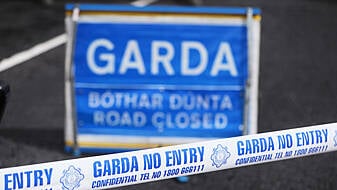On almost 6,200 occasions last year, it took over an hour for an ambulance to respond to life-threatening emergencies.
It took over four hours for an ambulance to arrive at a life-threatening emergency call 94 times last year, according to freedom of information figures.
Meanwhile, the response time for 21 of these incidents was five hours.
The HSE aims to respond to life-threatening heart and respiratory calls within 18 minutes and 59 seconds in 80 per cent of cases.
Other life-threatening emergencies should be responded to within the same timeframe in 50 per cent of cases.
On almost 6,200 occasions last year, it took over an hour for an ambulance to respond to either of these types of calls.
The longest was almost seven hours and 10 minutes to a call in Waterford. That was followed by over six hours to calls in Cork and Westmeath.
A total of 233 response times were over three hours.
Chief executive of Lifeline Ambulance Service, David Hall, admitted that the figures obtained by Newstalk are disturbing for both patients and healthcare representatives.
There is also an inherent danger and risk here as people then become tempted to transport themselves or a loved one to hospital which is very ill-advised.
Advertisement
Mr Hall said the Health Information and Quality Authority (Hiqa) should look at the clinical outcome in these cases to see if there were any adverse outcomes for the patients.
"By definition, these are patients who are very, very sick and to have so many people waiting so long would be very worrying and very concerning," he said.
"You wonder whether clinical outcomes are being put in jeopardy as a result of these delays and that is the real way that this needs to be evaluated and the appropriate measures and steps need to be taken to protect lives."
He added: "How long do you wait for such transport? There is also an inherent danger and risk here as people then become tempted to transport themselves or a loved one to hospital which is very ill-advised."
Meanwhile, the National Ambulance Service Representative Association (Nasra) has warned that the service is under "significant strain" with pay and conditions being so poor that they are losing in the region of 10 staff a month.
Brendan Flynn, who is a Nasra representative and a paramedic, told RTÉ radio's Morning Ireland that they do not have the resources or staffing levels to meet demand.
Staff retention issues
"There are obviously staff retention issues which are issues being experienced by many 24/7 services. We are losing about 10 staff a month. Since 2019 we brought in 472 staff that commenced training, and we lost 55 of those. 251 of them have been deployed to front line duties and 166.. assuming they qualify, and they are still with the service, will be deployed in December 2023 and January 2024.
"Staff retention is obviously a significant issue. And we have been waiting for remuneration for changes we made since 2002. And we had a laws and responsibilities review which still hasn't reported. If you want to retain staff obviously pay has to be addressed and remuneration for changes that have been made by staff in that timeframe."
Mr Flynn said they do not have the capacity to meet demand.
"Dublin Fire Brigade passed over on 53,000 occasions in 2022 they asked for National Ambulance Service Assistance in covering those calls. We weren't able to provide resources in 76 percent of those occasions.
"And again this is an ongoing capacity issue where the Ambulance Service hasn't kept pace. It is an under resourcing of the ambulance service over decades.
"The Minister did tell us in 2022 in a Dáil debate that he had increased since 2019 he had handed over €30 million in monies made available to the ambulance service which brings it to over €200 million available to the ambulance service to provide ambulance services nationally. Clearly it is not enough."
Mr Flynn said unfortunately delays in service occur when they don't have the resources to respond.
"Again there has been a massive increase in demand. From the National Ambulance Service point of view AS1 (emergency calls) and AS2 (lower priority calls) calls in 2021 were 330,000 whilst in 2022 that figure had increased to 379, 140 calls. So that is an increase of 15 percent in one year.
"I would anticipate that the Dublin Fire Brigade are experiencing similar increases in call volumes. The National Ambulance Service had 115,603 calls in December 2022 and January 2023. Over those two months. That is an average of 1,865 calls a day. Those months compared to Dublin 2021 and January 2022 is an increase of 19 percent."
The Health Committee is today due to hear from the HSE, which operates the National Ambulance Service, and Dublin Fire Brigade, which runs ambulance services in the capital. - Additional reporting Olivia Kelleher







